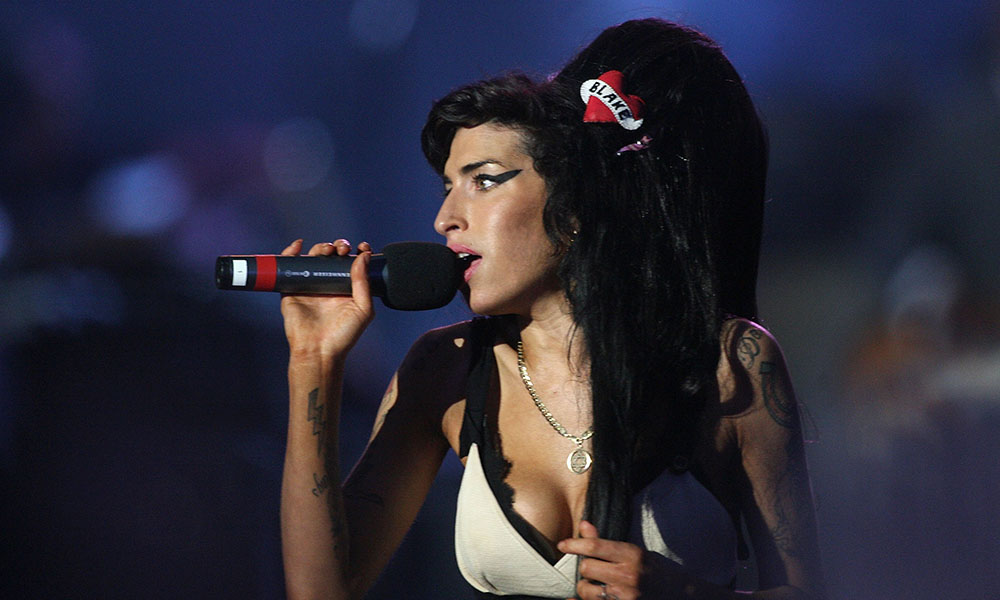Five Things You Didn’t Know About Amy Winehouse
While the general outline of her career is well-known, you may be surprised about some aspects of her life in music.

Amy Winehouse was the kind of innately gifted chanteuse who could sing the words from a computer manual and make them touch your soul. Once heard, her voice with its bittersweet timbre and jazz-inflected phrasing, could never be mistaken for anyone else.
London-born Winehouse only made two albums – 2003’s Frank and her iconic masterpiece Back To Black, released three years later – but she proved to be a fearless and visionary artist during that short time, fusing elements from vintage jazz, old school R&B, hip-hop, and 60s girl-group pop into a distinctive, highly personal style that went on to influence a generation of female singers that followed in her wake; everyone from Adele and Paloma Faith to Jorja Smith, Lana Del Rey, Lady Gaga and Billie Eilish.
But while the general outline of Amy Winehouse’s career is relatively well-known, you may be surprised about some aspects of her life and career. What follows is a few facts that you may not have known about the immensely talented singer.
She made her debut recording at age ten
Winehouse’s first time inside a recording studio happened in 1993 when she and a close primary school friend called Juliette Ashby decided to record some songs they’d written. They were both obsessed with the American female rap duo Salt-N-Pepa and, inspired, dubbed themselves Sweet ‘N’ Sour. (Winehouse, in case you were wondering, was Sour). Invited to a London studio by producer Alan Glass, who was a friend of Ashby’s mother, they cut three hip-hop-style tunes: “Glam Chicks,” “Boys…Who Needs Them,” and “Spinderella,” the last song name-checking Salt-N-Pepa’s DJ. Though the Sweet ‘N’ Sour tracks have never been released, the recording session was an important early step in Winehouse’s career.
She attended a famous London stage school
At the age of 13, Winehouse applied for a place at the prestigious Sylvia Young Theatre School in London. For her audition, she sang Ella Fitzgerald’s “The Sunny Side Of The Street” and her performance was so mesmerizing that she was immediately offered a place. Though the school’s £10,000 a year fee was beyond the Winehouse family’s financial reach, Young was so impressed by the young singer’s potential that she granted her a scholarship.
As a teenager, she sang with a jazz orchestra
When she was 16, Winehouse successfully auditioned for the UK’s National Youth Jazz Orchestra, a long-established 22-member big band founded and run by Bill Ashton. She made her debut at a Sunday lunchtime concert in July 2000 at a London pub called The Rayners Hotel; amazingly, she didn’t rehearse with the band beforehand but learned the four songs she was to sing while riding the London underground on her way to the gig. Though her laid-back attitude frustrated Ashton, he was bowled over by her talent and once described her as having “the best jazz voice of any young singer I had ever heard.”
Her final recording was with Tony Bennett
Thanks to her father’s passion for jazz crooners, Winehouse had grown up immersed in the music of Frank Sinatra and Tony Bennett, so when the opportunity came in 2011 to work with 85-year-old Bennett on his album Duets II: The Great Performances, she instantly agreed even though she wasn’t in the best of health. The pair met in London’s Abbey Road studios where they duetted on “Body and Soul,” a classic jazz number. Winehouse was initially nervous recording with one of her idols, but quickly found her groove and her performance left the veteran singer with an indelible memory, as he wrote in his 2016 memoir, Just Getting Started: “Amy put just the right touch of longing, the feeling of being both captivated and a little trapped by love and desire, into each phrase.”
A statue was erected in her honor in London’s Camden Town district
A life-sized bronze memorial to the singer was unveiled by her friend, the late British actor Barbara Windsor, at Stables Market in Camden Town, a part of North London that Winehouse called home. The event took place on what would have been the singer’s 31st birthday and was attended by her parents as well as numerous fans. The statue was created by the London-based American sculptor Scott Eaton, who told the New York Times that he wanted it to express Winehouse’s “attitude and strength, but also give subtle hints of insecurity.”
Listen to the best of Amy Winehouse on Apple Music or Spotify.












